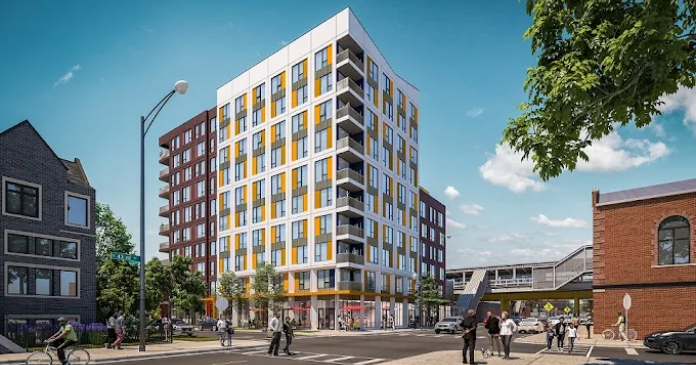Yardi Matrix released its March 2020 report on the multifamily housing market. The report largely captures the state of the market shortly before the onset of the COVID-19 virus and the extraordinary reactions that it prompted. In short, the multifamily housing market had gotten off to a fairly typical start to the year with strong fundamentals and moderate rent growth. However, the report also takes a look into the future and provides some insights as to which markets may be hardest hit due to the unfolding pandemic.
Rent growth followed seasonal pattern of increase
The report showed that the nationwide average rent was up $6 in March to a level of $1474 per month. This follows the usual annual pattern where rents rise strongly in the spring and summer but stagnate during the rest of the year. On a year-over-year basis, rents were up by 2.9 percent, in line with recent performance.
For reference, the Bureau of Labor Statistics (BLS) reported that the all-items urban consumer price index (CPI-U) was up 2.3 percent on a year-over-year basis in February. The shelter portion of the CPI was up 3.3 percent in the last 12 months, trailing medical care services (5.1 percent) for the fastest rate of growth for the major categories tracked. The BLS also reported that average hourly earnings of all employees on private non-farm payrolls in March were up 3.1 percent over the last 12 months. Average hours worked was down by 0.2 hours per week.
Phoenix and Seattle lead in rent growth
The Yardi Matrix report focuses on the 30 largest metro areas and ranks them both by average rent growth over the last 12 months and also by rent growth in two sub-classes of apartments. These are the “renter by necessity” (RBN) class and the “lifestyle” (renter by choice) class.
The report identifies major markets with the highest average annual rent growth as Phoenix (7.6 percent), Seattle (6.0 percent), Inland Empire (4.9 percent), Charlotte (4.9 percent), and Las Vegas (4.3 percent).
The major markets with the lowest average annual rent growth were Orlando (1.0 percent), Houston (1.0 percent), Los Angeles (1.5 percent), San Francisco (1.6 percent) and Atlanta (2.0 percent). Note that all of the top 30 metro areas tracked in this report continued to experience positive rent growth.
Houston once again edged out San Antonio as the metro having the lowest occupancy rate of the top 30, coming in with 92.3 percent. San Antonio’s occupancy rate was 92.5 percent. At the other end of the scale, the Twin Cities had the highest occupancy rate at 96.3 percent, followed by Boston at 96.2 percent. Occupancy was down slightly from its year-earlier level in all 30 of the cities tracked in the report except for Kansas City, where it was flat.
In the 12 months to March, Denver had the highest percentage apartment completions compared to existing stock at 5.1 percent, followed by Austin at 4.7 percent. Charlotte dropped to third place with 4.1 percent new apartment completions. The occupancy rate was down 0.6 percent in Denver, down 0.1 percent in Austin and down 0.5 percent in Charlotte over the past 12 months.
The workforce housing (RBN) portion of the market again experienced a higher rate of rent growth in March than did the lifestyle portion of the market. Rents in the RBN portion of the market went up by 3.7 percent, compared to only a 2.4 percent increase seen in the lifestyle product class.
Projecting the impact of COVID-19
While Yardi held a recent webcast to discuss the potential impact in much more detail than was presented in this report, the report did highlight a few areas where the reaction to the virus will impact the housing market.
The huge surge in unemployment claims will put a cash squeeze on many renters since there will be a lag until unemployment benefits flow.
The NMHC and many large owners and operators are supporting a 90 moratorium on evictions and rent increases. Some localities have issues mandates against evictions.
The leisure and hospitality, oil and retail and wholesale trade sectors of the economy are being hit hard but these industries are not evenly distributed across the country. Las Vegas, the southwest Florida coast, Orlando and the Texas oil patch were identified as areas which are particularly exposed to job losses.
The complete report discusses some of the smaller markets. It has more information about the larger markets including numbers on job growth, completions of new units and occupancy rates. It also includes charts showing the history of rent changes in 18 of the top 30 markets over the last 4 years. It can be found here.












